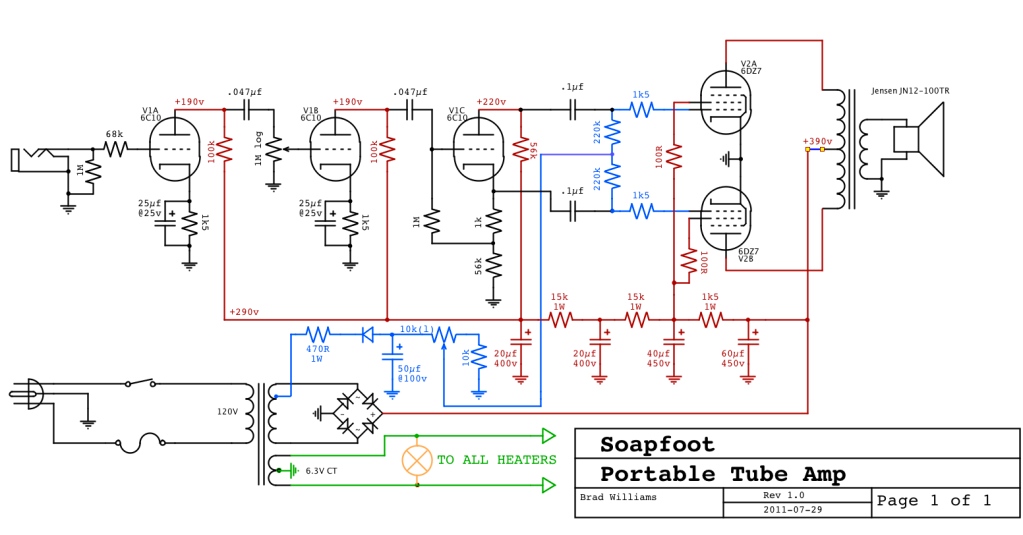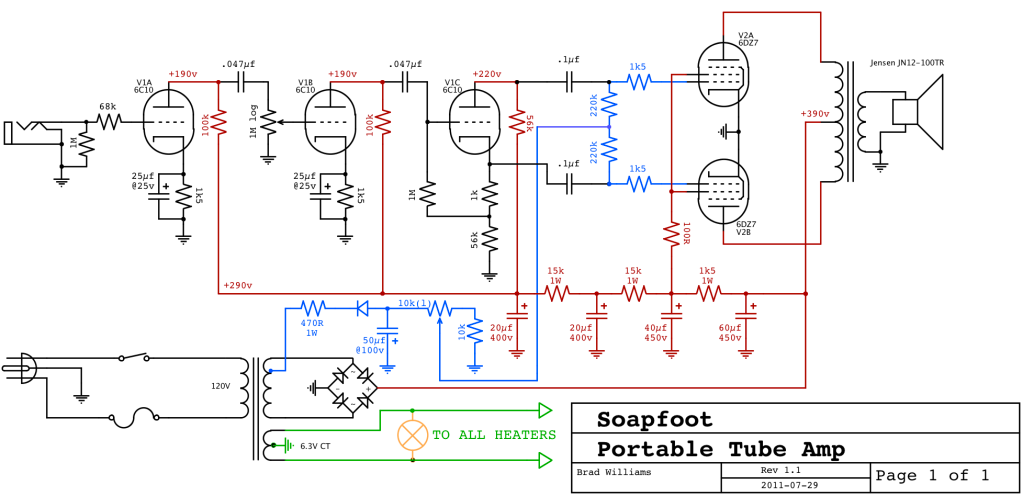soapfoot
Well-known member
I'm thinking of designing a guitar amp with the goal of keeping weight to a minimum. I'm less concerned with maximizing power-per-dollar than I am with maximizing power-per-ounce. I was kicking around the idea of going single-ended, and I'm wondering if this might be a good way to keep weight down. My thinking was that fewer tubes drawing filament current would allow a smaller, lighter power transformer, and I assumed that a single-ended OT could be smaller/lighter as well (that might be incorrect). Not to mention smaller chassis (one fewer tube socket), etc.
If you agree that this might be a good way to go to achieve my objective, the question becomes "which power tube to use?" An obvious choice would be a 6550/KT88, but if something was capable of putting out more power in single-ended operation, I'd be willing to spend more, hunt harder, etc.
I want to drive a single efficient 12" speaker, and the idea would be to keep weight down as much as possible while still being able to drive the 12 to moderate volumes. I already have weight-saving ideas for the speaker (neodymium) and cabinet (paulownia wood), and I'm willing to suffer the expense of getting one-off transformers made. I do want the amp to sound great in a semi-'traditional' way as a guitar amp, though, and as a result I'm reluctant to use toroidal transformers for either power or output. By using a bridge rectifier, I could get by with using only two tubes in the amp.
The goal would be to make a great-sounding 1x12 tube amp, usable on gigs, that weighs 15 lbs or less. Any ideas or direction is welcome.
If you agree that this might be a good way to go to achieve my objective, the question becomes "which power tube to use?" An obvious choice would be a 6550/KT88, but if something was capable of putting out more power in single-ended operation, I'd be willing to spend more, hunt harder, etc.
I want to drive a single efficient 12" speaker, and the idea would be to keep weight down as much as possible while still being able to drive the 12 to moderate volumes. I already have weight-saving ideas for the speaker (neodymium) and cabinet (paulownia wood), and I'm willing to suffer the expense of getting one-off transformers made. I do want the amp to sound great in a semi-'traditional' way as a guitar amp, though, and as a result I'm reluctant to use toroidal transformers for either power or output. By using a bridge rectifier, I could get by with using only two tubes in the amp.
The goal would be to make a great-sounding 1x12 tube amp, usable on gigs, that weighs 15 lbs or less. Any ideas or direction is welcome.

























